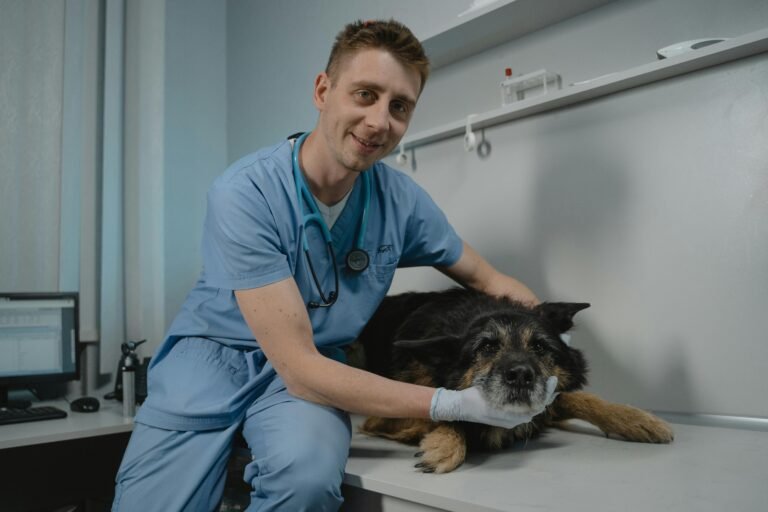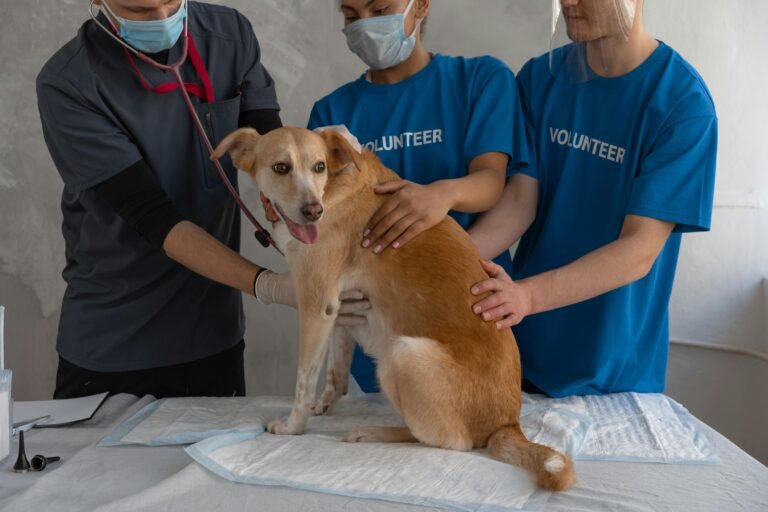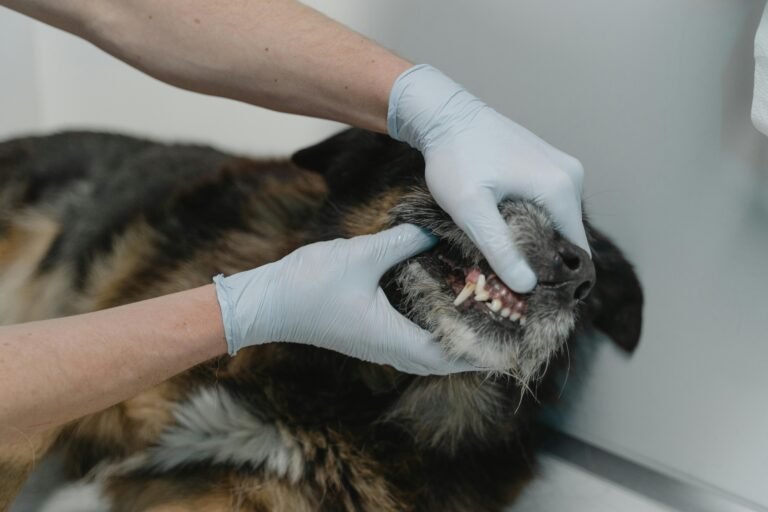Introduction
Food allergies in dogs are more common than many people realize, and they can have a profound impact on your pet’s overall health and happiness. Unlike food intolerance, which generally causes digestive upset, a true food allergy triggers an immune response that can manifest in a variety of ways—from itchy skin and ear infections to chronic gastrointestinal problems. Because these signs can also be caused by environmental allergens or underlying health conditions, figuring out whether your dog is reacting to their diet can be tricky. This comprehensive guide will help you understand the causes of food allergies in dogs, recognize the symptoms, work with your veterinarian to get an accurate diagnosis, and manage your dog’s diet to keep them comfortable.
Recognizing Signs and Symptoms of Food Allergies
Dogs with food allergies often show symptoms that extend beyond simple stomach upset. One of the most common signs is persistent itching or scratching, particularly around the face, paws, ears, and rear end. You might notice red, inflamed skin, hot spots, or hair loss in these areas. Recurrent ear infections are another hallmark of food allergies, and if your dog keeps shaking their head or scratching at their ears, it could be due to inflammation caused by an allergen in their food. Gastrointestinal symptoms can include vomiting, diarrhea, gas, and bloating, but these issues alone are more likely to be caused by something else, like a parasite or a sudden change in diet. Finally, some dogs experience eye discharge, sneezing, or nasal congestion, although these symptoms are more commonly associated with environmental allergies. Because the signs of food allergies can mimic those of other conditions, it’s important to document when your dog experiences symptoms and discuss them with your veterinarian.
Common Food Allergens for Dogs
While any ingredient can potentially cause a food allergy, certain proteins and additives are more likely culprits. The most common food allergens in dogs include:
- Beef: Many commercial dog foods use beef as a primary protein source, and prolonged exposure can lead to sensitivity.
- Chicken: Another ubiquitous protein in dog foods, chicken allergies can cause skin irritation and digestive issues.
- Dairy products: Some dogs have difficulty digesting lactose or reacting to milk proteins, leading to ear infections and gastrointestinal upset.
- Wheat and gluten: Although true gluten allergies (celiac disease) are rare in dogs, wheat protein can still trigger an immune response.
- Soy: Found in many processed foods, soy is a known allergen that can cause itching and digestive problems.
- Eggs: Egg proteins can be problematic for some dogs, resulting in skin and coat issues.
- Lamb: Once considered a hypoallergenic alternative, lamb can cause allergies, especially if it becomes a staple protein.
Some dogs also react to artificial additives, preservatives, or coloring agents. Reading ingredient labels carefully and choosing high-quality, limited-ingredient foods can help minimize exposure to potential allergens.
Diagnosing Food Allergies
Diagnosing food allergies in dogs can be a time-consuming process because there’s no definitive blood test or skin test that provides a clear answer. The gold standard for diagnosing food allergies is an elimination diet, in which you feed your dog a novel protein and carbohydrate source that they’ve never eaten before. Novel proteins might include duck, venison, rabbit, or fish, while novel carbohydrates could be sweet potatoes or peas. Hydrolyzed protein diets, in which proteins are broken down into molecules too small to trigger an immune response, are another option. During the elimination diet trial, it’s crucial to feed your dog only the prescribed diet—no treats, table scraps, flavored medications, or chew toys that contain animal products. This trial typically lasts 8‑12 weeks, giving the body time to clear any residual allergens and allowing symptoms to resolve. If your dog’s symptoms improve during the elimination diet and reappear when you reintroduce their original food, it’s likely they have a food allergy. Throughout this process, keep your veterinarian informed and follow their guidance closely to ensure accuracy and safety.
Treatment Options and Management
Once you identify the offending ingredients, the primary treatment for food allergies is avoidance. This means feeding a diet that does not contain the allergens and monitoring everything your dog consumes. Many pet food manufacturers produce limited-ingredient diets or hypoallergenic formulas specifically designed for dogs with food sensitivities. Some dogs do well on home-cooked meals, which allow you to control every ingredient, but it’s important to work with a veterinary nutritionist to ensure the diet is balanced and provides all essential nutrients. In addition to dietary management, your veterinarian might recommend medications to alleviate symptoms during flare-ups. These could include antihistamines to reduce itching, corticosteroids to address severe inflammation, or topical treatments for skin infections. Omega-3 fatty acid supplements, derived from fish oil or algae, are often used to support skin health and reduce inflammation. Probiotics and digestive enzymes can help restore gut balance, particularly if your dog has experienced chronic diarrhea or antibiotic treatments.
Preventing Food Allergies
While you can’t always prevent a dog from developing food allergies, there are steps you can take to reduce the risk and catch problems early. Introduce new foods slowly, especially when transitioning a puppy from their breeder’s diet or switching adult dog foods. Rapid dietary changes can upset the digestive system and may make it harder to pinpoint an allergen if symptoms develop. Consider rotating between different high-quality protein sources, which can lessen the chance that your dog will develop a sensitivity to one particular protein. Avoid foods with a long list of artificial additives, preservatives, and fillers, and look for products that list real meat, vegetables, and wholesome grains as primary ingredients. Maintaining overall wellness through regular exercise, grooming, parasite prevention, and dental care can also support your dog’s immune system and make them less susceptible to allergies. Finally, monitor your dog’s skin and coat condition regularly, and address any issues promptly before they become chronic.
When to See a Veterinarian
If you suspect your dog has a food allergy, it’s important not to self-diagnose or switch foods repeatedly without professional guidance. Frequent diet changes can cause additional stress on the digestive system and may mask the real problem. Schedule an appointment with your veterinarian to discuss your dog’s symptoms and medical history. The vet might perform a thorough physical exam, rule out flea allergies, environmental allergies, or underlying infections, and recommend an elimination diet trial. They can also advise you on proper nutrition, supplementation, and medications if needed. Early intervention is key to preventing chronic skin problems, ear infections, and digestive issues that can significantly impact your dog’s quality of life. With patience and careful management, most dogs with food allergies can live comfortable, healthy lives.
Conclusion
Food allergies in dogs can be challenging to diagnose and manage, but understanding the signs and knowing how to respond can make a world of difference for your canine companion. By recognizing symptoms like persistent itching, recurring ear infections, and gastrointestinal upset, you can work with your veterinarian to implement an elimination diet and identify the offending ingredients. Once you’ve determined the culprit, careful dietary management, routine vet checkups, and vigilant monitoring will help keep your dog’s symptoms at bay. Remember that every dog is different, and what works for one may not work for another. Patience and collaboration with your vet are essential. With the right approach, you can provide relief for your dog and enjoy the peace of mind that comes from keeping them healthy and happy.






